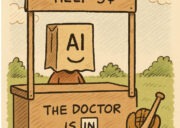
In today’s constantly evolving tech industry, maintaining the engagement and motivation of developers can prove to be a challenging task. As a company owner or manager, your objective is to establish an atmosphere conducive to growth, creativity, and collaboration within your development team. One effective strategy involves implementing a range of engagement activities designed to encourage knowledge sharing, strengthen team dynamics, and enhance skill sets.
In this article, we will delve into various methods for engaging developers.
Why Developers need to be engaged
Developers are the foundation of any technology-focused company. They bear the responsibility of conceiving, constructing, and sustaining software applications that drive global businesses. Nevertheless, despite their pivotal role, developers may lose their enthusiasm if they perceive their contributions as undervalued or if they grow disinterested in their tasks.
One compelling rationale for prioritizing developer engagement lies in its profound impact on collaboration and teamwork. When developers establish meaningful connections with each other and align with the company’s mission, they are more inclined to collaborate harmoniously to achieve shared objectives.
Additionally, engagement acts as a catalyst for creativity among developers. Engaging in activities such as hackathons or Katas allows developers to unleash their creative potential by experimenting with fresh approaches and exploring diverse technologies.
Furthermore, regular participation in knowledge-sharing meetings and workshops by development teams leads to accelerated skill enhancement compared to those who abstain from such engagements. This ensures that your team remains well-informed about industry trends and adopts best practices, ultimately enhancing productivity.
Fostering a culture of engagement is pivotal for retaining top talent within your organization. Developers who relish opportunities for growth within an organization are more likely to remain committed than those who perceive a limited future for themselves within the company.
More from this author: Why DevX is Crucial for Business Success
Different Strategies for Better Developer Engagement
There are various ways in which you can engage developers, let’s see some of them and their pros and cons.
Hackathons

A hackathon, short for “hacking marathon,” is a collaborative and time-bound event in which individuals or teams of participants come together to brainstorm, design, and develop innovative solutions to specific challenges or problems. During a hackathon, participants work intensively over a set period, often 24 to 48 hours, to create functional prototypes, apps, or projects that address the defined problem statement.
Pros
Hackathons stimulate innovation and collaboration, yielding rapid solutions, aiding talent identification, and they encourage out-of-the-box thinking often leading to groundbreaking ideas and solutions.
Cons
On the other hand, they can lead to burnout and may prioritize speed over quality. Given that they require significant preparation they may hinder daily operations.
Guilds of practice

A guild of practice is a structured community or group where employees with similar interests come together to share knowledge, best practices, and learn new things. These guilds are dedicated to enhancing expertise, fostering continuous learning, and driving professional development among members. They often facilitate cross-functional collaboration and contribute to a culture of knowledge sharing within the company.
Pros
Guild of practices meetings allow team members to discuss best practices and share solutions related to specific areas of expertise.
Cons
While this type of engagement promotes knowledge-sharing among peers, it may also create silos within the organization if not carefully monitored.
Kata

In software development, a Kata refers to a structured and repetitive coding exercise that aims to help developers improve their coding skills, problem-solving abilities, and coding techniques. Inspired by martial arts practice, software katas are short, well-defined challenges or problems that developers work on repeatedly to enhance their coding proficiency and build muscle memory for specific coding patterns or algorithms. These exercises are valuable for honing skills and promoting continuous learning within development teams.
Pros
Pros of software katas include skill enhancement, problem-solving practice, collaboration, and fostering a culture of continuous improvement.
Cons
Cons may involve limited real-world applicability, potential boredom or burnout, time consumption, and the risk of neglecting creative aspects of development.
Knowledge sharing meetings

Knowledge-sharing meetings are structured gatherings where developers come together to exchange valuable insights and expertise. These meetings serve as a platform for disseminating knowledge, discussing best practices, and facilitating learning across different teams or departments. Organizing effective knowledge-sharing meetings involves setting clear objectives, scheduling regular sessions, designating facilitators or moderators, and encouraging active participation. These meetings can take various formats, including presentations, discussions, workshops, or informal brainstorming sessions, depending on the nature of the knowledge being shared and the goals of the organization.
Pros
Knowledge-sharing meetings are excellent for fostering collaboration and idea generation among team members.
Cons
However, knowledge-sharing meetings must be well-organized; they cannot be conducted haphazardly, as this would result in a decrease in their effectiveness, therefore, they can consume a significant amount of time and resources.
Pair programming and Mob programming

Pair programming and Mob programming are collaborative development approaches that promote teamwork and knowledge sharing in software development.
In Pair programming, two developers work together at a single computer, with one actively writing code (the driver) and the other reviewing, suggesting improvements, and ensuring quality (the navigator). This real-time collaboration enhances code quality, reduces errors, and fosters learning. To organize effective pair programming sessions, teams should establish clear roles and responsibilities, communicate openly, and rotate pairs regularly to diversify knowledge exchange.
Mob programming, on the other hand, involves the entire team working together on a single task or piece of code. It promotes collective decision-making, brainstorming, and continuous improvement. Effective organization of mob programming sessions requires defining a clear goal, appointing a facilitator to manage the process, and ensuring a collaborative environment where every team member feels heard.
Pros
Pair programming offers enhanced code quality, quicker issue resolution, and knowledge transfer among team members. It also encourages communication and mentorship.
Mob programming fosters collective ownership, knowledge sharing, and better code understanding across the team. It can also be a valuable tool for onboarding new team members.
Cons
Pair programming can be challenging to coordinate schedules, and some developers may feel uncomfortable with constant oversight.
Mob programming may lead to slower progress on tasks, potential disagreements among team members, and less individual coding time.
Off-site work activity

An Off-site work activity refers to a work-related event or project that takes place outside of the usual office environment, and it can encompass various exciting locations. For instance, it might involve a retreat at a beachfront house or a cozy mountain cabin, all funded by the company for a week-long session dedicated to a particularly complex software development phase. This approach seeks to combine the demands of intense concentration and extended effort with a change of scenery. Such locations offer employees the opportunity to deep focus on their work and rejuvenate more rapidly, benefiting from a different ambiance where they can recharge their energy levels. This innovative approach not only promotes productivity but also enhances the overall well-being of the workforce, fostering a more dynamic and motivated team.
Pros
Off-site work activities provide a break from the traditional office environment, which can lead to increased creativity and fresh perspectives. A change of scenery, such as a beach or mountain retreat, can inspire innovative thinking and problem-solving. Secondly, these activities can significantly boost employee morale and motivation and it encourages team bonding and collaboration.
Cons
Despite the numerous advantages, off-site work activities do present some challenges. For example, they can be expensive. The cost factor may limit the frequency and scale of such activities for many organizations. Furthermore, not all employees may be equally comfortable or productive in an off-site setting, think about parents who doesn’t want to leave their family for a week. Therefore, organizations should weigh these pros and cons carefully when considering off-site work activities and tailor them to align with their workforce needs.
How to Implement Developer Engagement in Your Company
Engaging developers in your company is crucial for maintaining their motivation and productivity. So, how can you implement developer engagement in your company?
Start by identifying the areas of interest for your developers. Ask them what they want to learn or work on and incorporate their feedback into the development process. Create an annual training plan that takes into account both the company’s needs and their growth preferences. Review this plan several times during the year to assess whether adjustments are necessary.
You don’t have to adopt all the solutions proposed in this article. Evaluate the pros and cons of individual activities and select those that you believe align with your company’s needs. Creating a mix-and-match approach to developer engagement activities that best suits your company’s culture will yield the most favorable results.
By effectively implementing these initiatives, you will cultivate an environment that promotes learning and supports personal and professional growth within your developer community!
Conclusion
Having clear strategies for developer engagement in your company is crucial for the growth and success of your business. By implementing activities such as knowledge-sharing meetings, hackathons, guild of practices meetings, weekly meetings, off-site team-building events, lunch & learn sessions, pair programming, mob programming sessions, katas and coding challenges workshops, and conferences you can create a culture of learning and innovation within your organization.
Remember that it’s not just about providing perks like free food or comfortable office spaces but investing in professional development programs for developers which will lead them to become more productive contributors to their teams.




